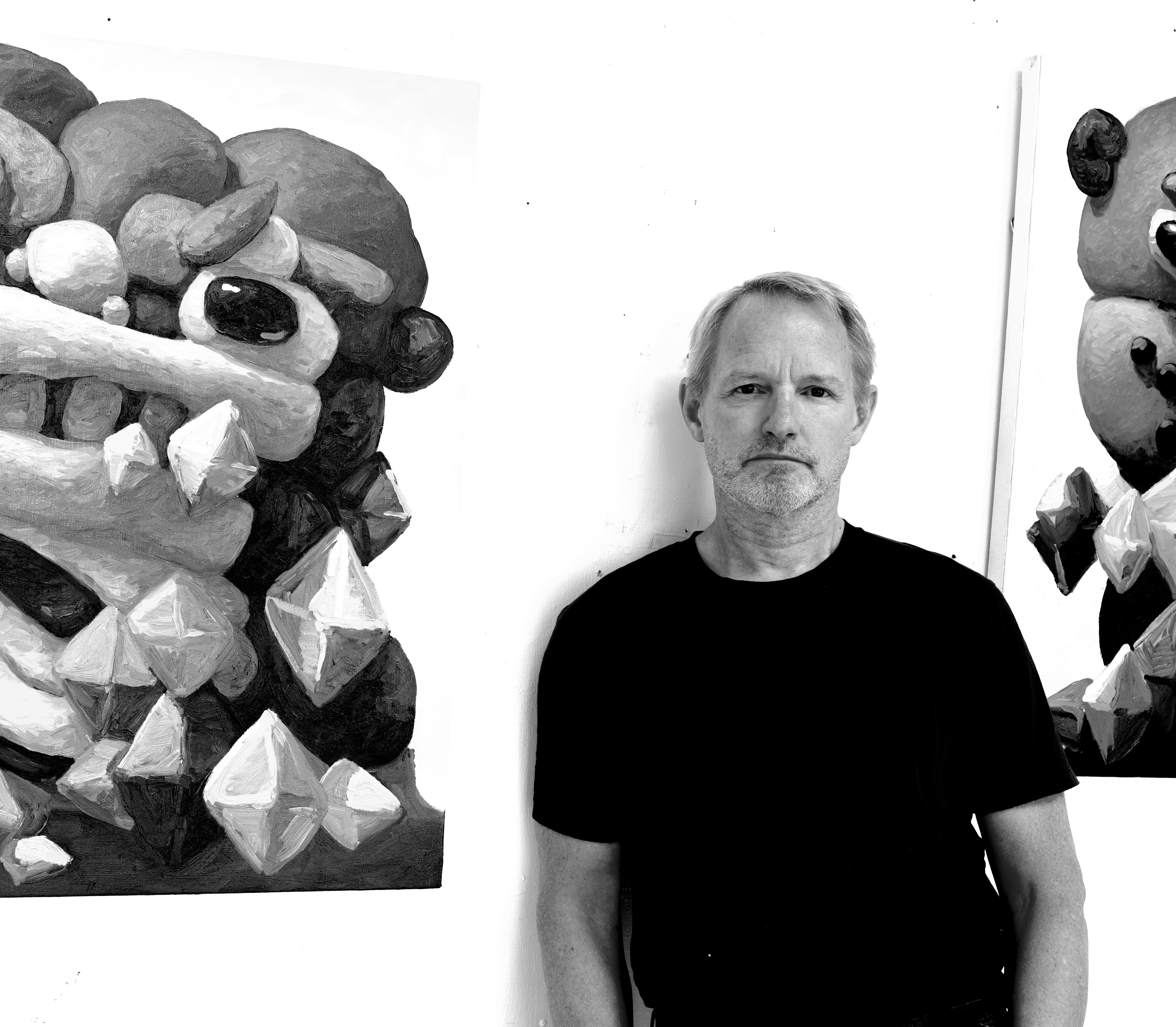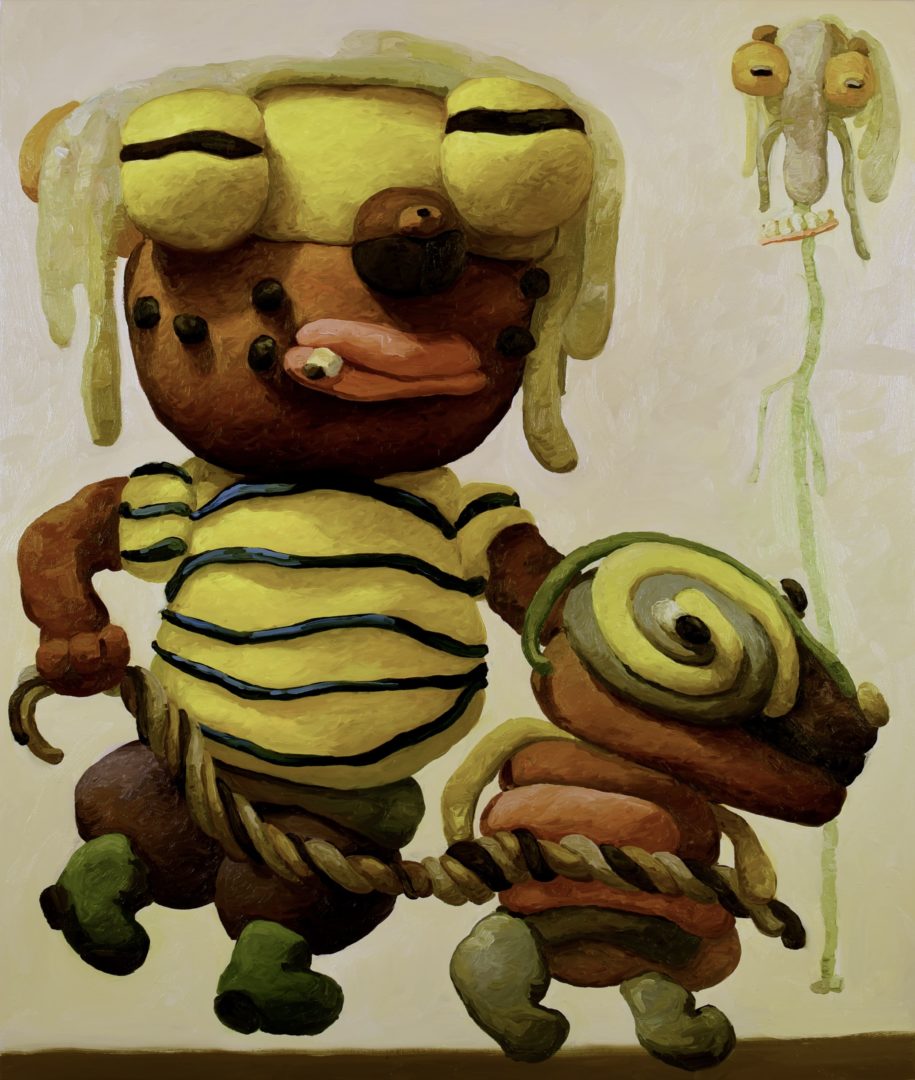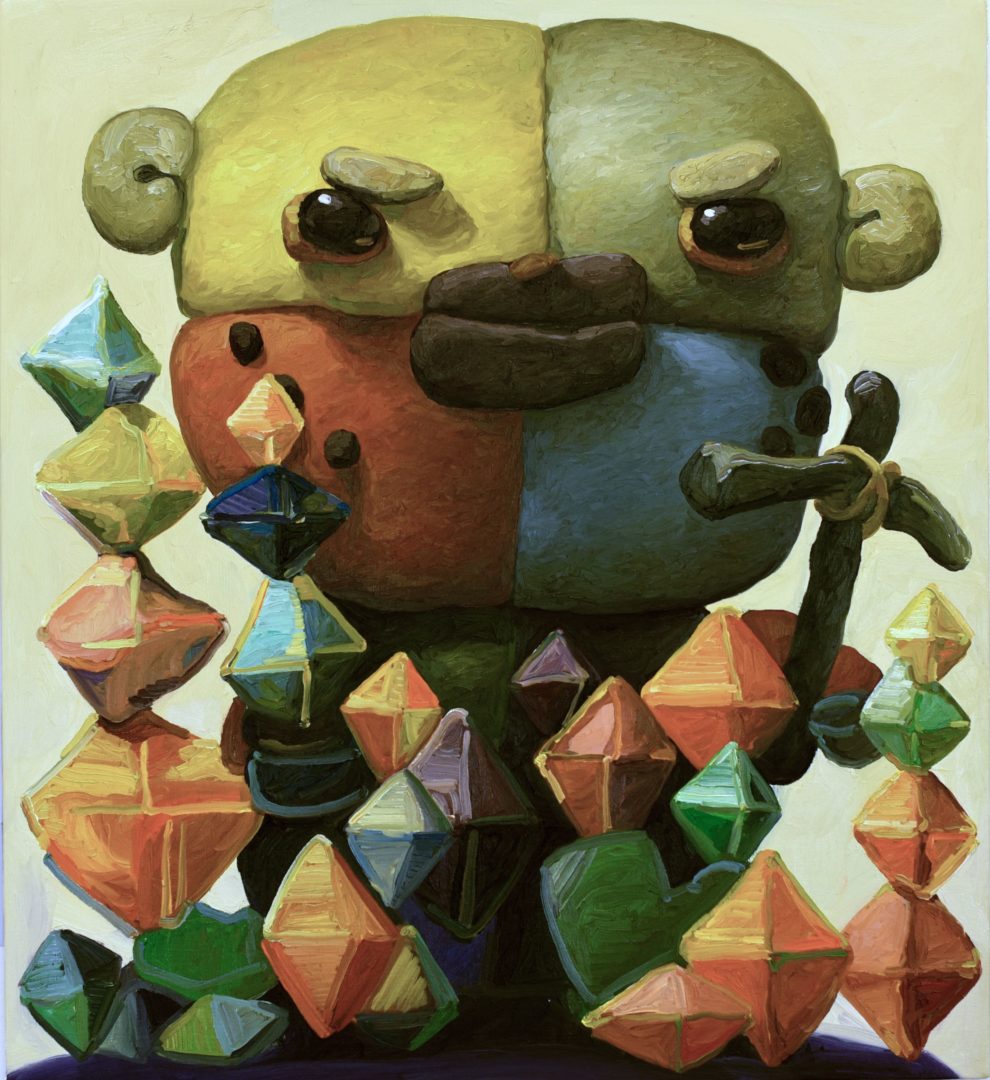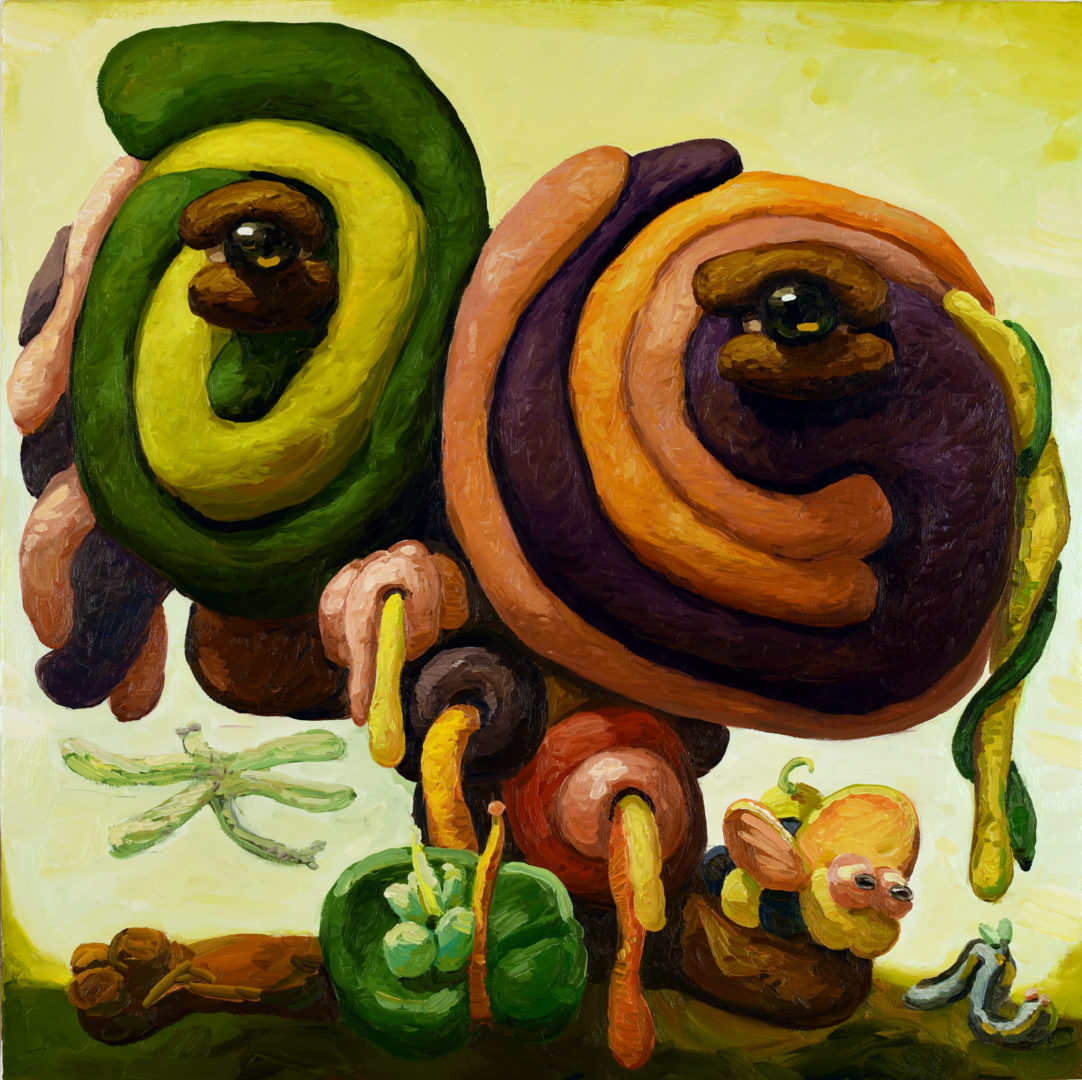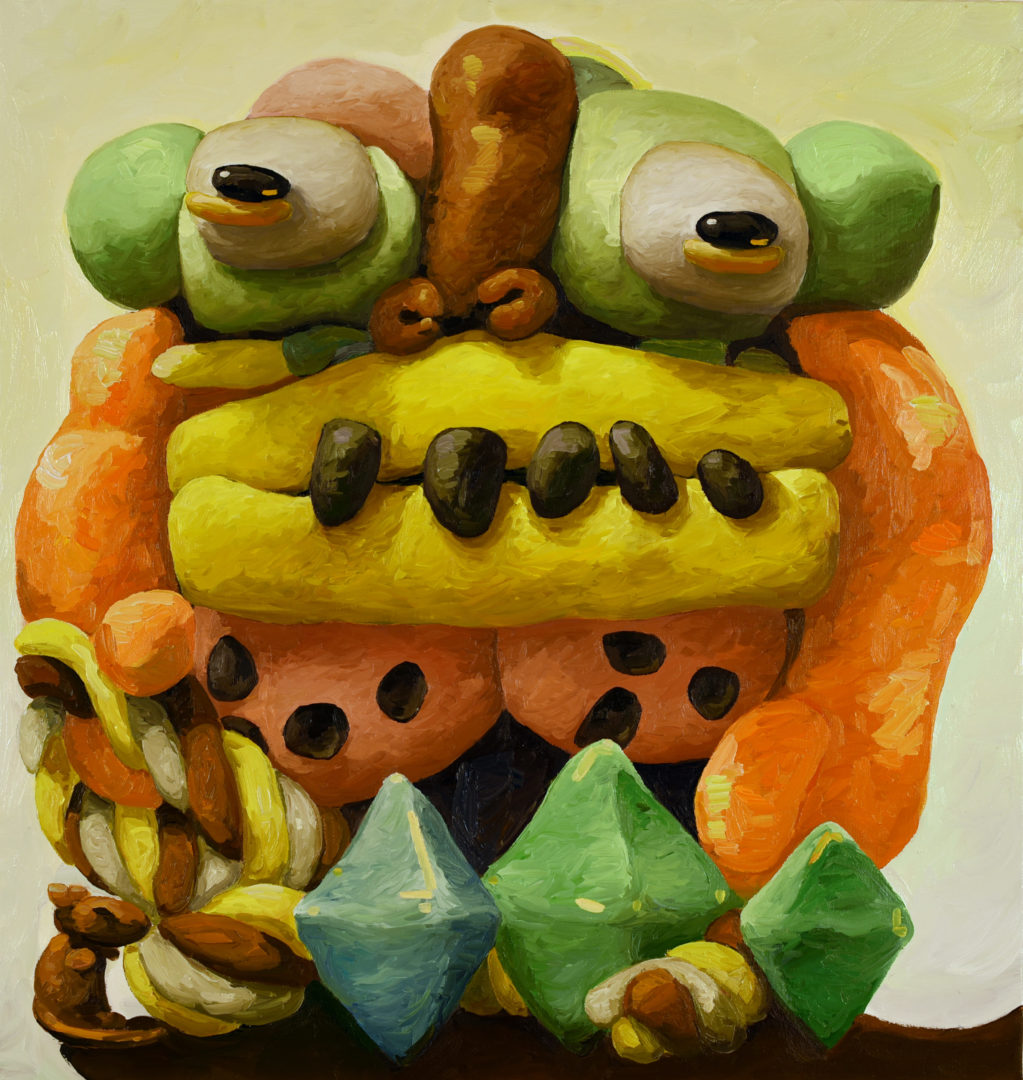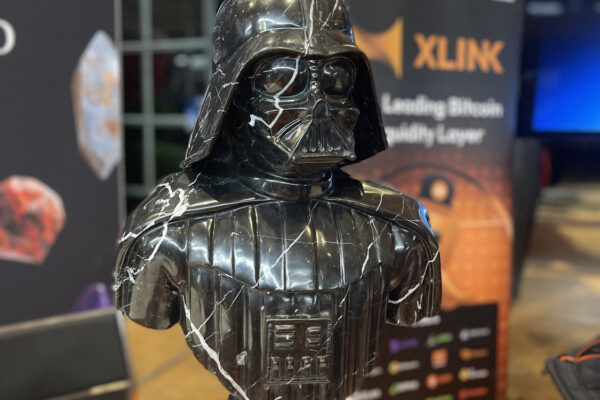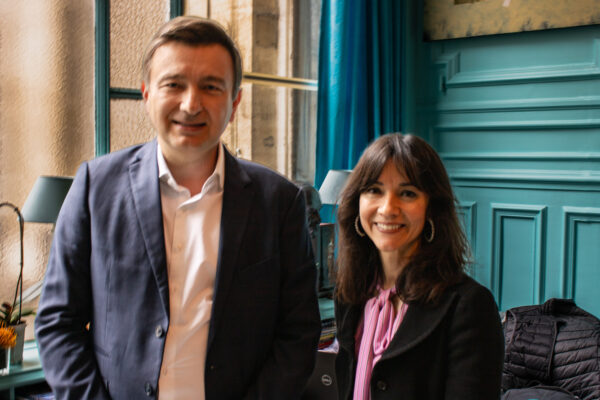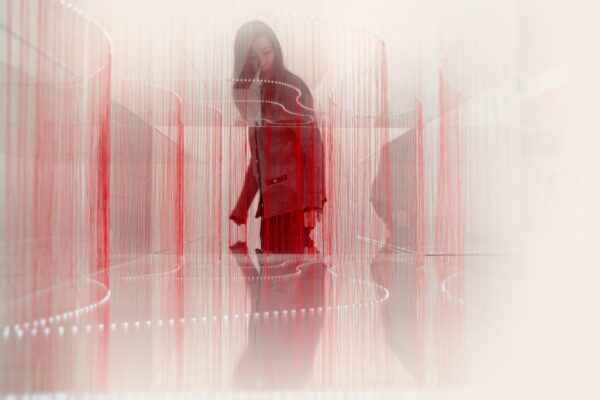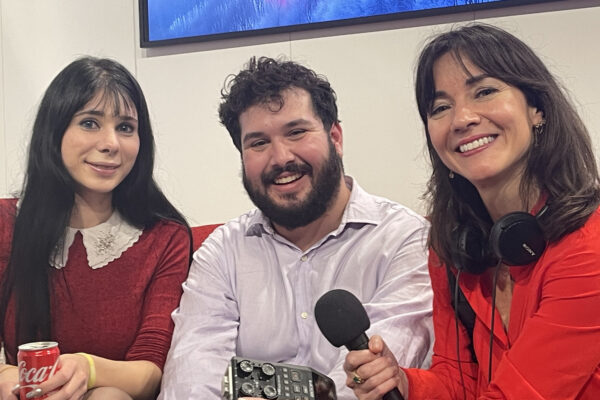Quelle est la différence entre l’imagination et la réalité dans l’art ? Une discussion étonnante avec Peter Opheim sur le processus de création. Qu’est-ce que la vérité et la réalité ? Comment des personnages imaginaires peuvent-ils nous en apprendre autant sur notre humanité ? Lorsque j’ai rencontré l’artiste américain Peter Opheim, je savais que la discussion serait passionnante et surprenante pour les auditeurs du podcast. Les peintures de Peter représentant des personnages issus de son imagination, des petits monstres, des plantes ou des animaux sous forme de sculptures en argile à modeler sont tout simplement idéales et captivantes pour parler du processus créatif dans l’art.
8 Décembre 2021 | Paris
De Delphine Souquet
J’étais prêt à poser à mon invité toutes les questions que personne n’avait osé poser sur ses tableaux par intimidation ou par peur de passer à côté de l’œuvre. Je n’ai jamais été aussi loin dans une discussion sur le processus créatif avec un artiste sur le podcast. Merci à Peter pour sa générosité et sa grande humilité à partager ses pensées et ses sentiments avec nous sur le podcast en dépassant toute résistance, tout comme il le fait sur la toile.
L’article ci-dessous est un extrait de notre discussion avec de nombreuses citations de Peter Opheim, dans le but d’être le plus proche possible de sa pensée.
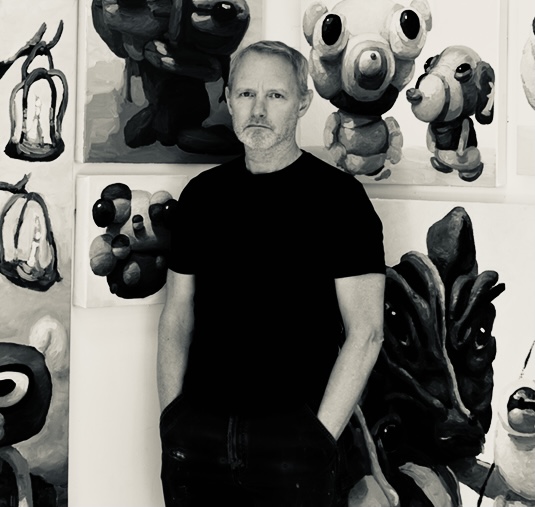
Qui est mon invité, l’artiste Américain Peter Opheim?
Mon invité vit et travaille entre New York et San Cristobal dans l’État du Nouveau Mexique – où se trouve son atelier – Il a notamment exposé son travail en Russie, à Taiwan, au Japon, à Londres, New York ou encore à Los Angeles. Son style est reconnaissable entre tous de par sa forme d’expression inhabituelle voire provocante est constitué de personnages issus de son imaginaire.
Présentation de son exposition personnelle à Paris
J’ai créé spécifiquement cette série de peintures pour la Cohle Gallery à Paris : elle s’articule autour d’une grande toile qui s’appelle “Billy looking for the lost bird” …
Peter Opheim
Delphine : Vous êtes un artiste international, alors pourquoi cette première exposition personnelle à Paris maintenant ?
Peter : J’expose avec la Cohle gallery depuis quelques années et c’est la première fois que nous avons eu l’occasion de présenter une exposition personnelle ici, à Paris, et le travail que j’ai créé pour cette exposition était spécifiquement destiné à la Cohle gallery .
Il y a donc une douzaine de peintures ici et elles sont divisées en cinq six peintures représentant les personnages du marais, puis cinq six peintures représentant les personnages de la grotte et enfin la pièce maîtresse de la série de peintures est Billy à la recherche de l’oiseau perdu.
Si je peux dire quelques mots à ce sujet, il s’agit d’un grand tableau intitulé “ Billy à la recherche de l’oiseau perdu “, dans lequel on voit un personnage et son ami, avec une corde, qui partent à l’aventure.
Mais pour moi l’histoire n’a pas commencé ici, l’histoire a commencé dans un chapitre précédent. l y avait un équipage sur un bateau, et il est arrivé un accident à ce bateau, il a explosé, et l’équipage a débarqué sur une île, et sur l’île ils ont rencontré diverses créatures, des plantes mangeuses d’hommes, des cannibales, et d’autres personnages mystérieux. Les peintures de l’exposition se déroulent sur cette île, dans un endroit différent. La peinture commence par un personnage qui marche, regarde autour de lui et traverse un marécage. Toutes ces peintures représentent des personnages mi-végétaux mi-animaux mi-imaginaires, avec des fleurs, des parties suintantes, des libellules, des vers et des abeilles.
Un peu comme une allégorie de nos désirs
Et dans la deuxième partie de cette aventure, il finit par entrer dans une grotte dans laquelle on voit des personnages qui ressemblent à des ogres ou à des trolls. Ce sont les mineurs de la grotte et le truc avec eux, c’est que parfois ils ont leur outil mais ils deviennent aussi des pierres précieuses qui font partie d’eux et je pense que c’est un peu comme une allégorie de nos désirs, nous devons faire attention à ne pas aller trop loin dans ce que nous voulons ou nous devenons ce que nous voulons et nous nous perdons. …
Delphine : le nom de votre personnage central est Billy, ont-ils tous des noms ?
Effectivement ! Parfois, j’utilise des noms que nous connaissons et parfois, je leur donne un nom norvégien ou français ou un nom qui fait référence à l’histoire du lieu où ils sont présentés. Dans certaines de mes peintures, je leur ai aussi donné des noms latins imaginaires. Les personnages qui sont dans le marais, je voulais leur donner un nom de plante, alors je les ai traduits en anglais par un nom latin, un nom latin contemporain pour la plante.
Quand l’imagination devient réalité dans l’art : le processus créatif
Avant, je faisais de l’art abstrait et si j’ai arrêté, c’est parce que je trouvais que cela ne répondait pas assez aux préoccupations de l’humanité. …
Peter Opheim
Delphine : Il semble que vous racontiez une histoire de fiction avec vos peintures, mais quel est le mot correct pour parler de ces créatures, fantastiques ou imaginaires ?
Les mots corrects sont donc univers et imagination pour décrire mon travail artistique, mais je dois dire que lorsque j’ai commencé à faire ces peintures, il y a environ 10 ou 12 ans, je faisais de l’abstrait. Et si j’ai arrêté de le faire, c’est parce que j’avais l’impression que cela ne répondait pas suffisamment aux préoccupations des Hommes.
Je sentais qu’il fallait créer des œuvres personnelles, mais pas privées. J’ai senti que l’art abstrait aussi beau soit-il avait fait son temps, alors j’ai voulu produire des œuvres en utilisant des figures que j’ai créées à partir de mon imagination de la même manière qu’une peinture abstraite est assemblée, mais en les transformant en personnage imaginaire qui nous révèle ce que cela signifie d’être humain.
Et en fait, pour moi, je les considère comme très réels. Je considère qu’il s’agit en quelque sorte d’un univers différent, ou d’une autre façon de voir les choses.
Je commence par constituer un personnage en pâte à modeler
“C’est ainsi que je les crée. Mon processus est le suivant : je commence par un morceau de pâte à modeler physique, puis je peins directement. Je ne prends pas de photos, il s’agit de regarder et de vivre une expérience.
Il s’agit donc d’humanité, je ne les considère pas du tout comme des personnages fantastiques. …
Peter Opheim
Mais ce qui est important, c’est que ce sont les peintures elles-mêmes qui sont censées être réelles, avoir une âme. Elles fonctionnent presque comme des sculptures : si cette figure existait dans la vie réelle, elle aurait cette taille et je considère qu’elles évoluent en pensée. Elles ne sont pas fantastiques, elles ne sont pas liées au passé, elles ne sont pas non plus politiques ; je joue un rôle dans leur réalisation, mais mon rôle est un peu indéfini : elles ne sont pas censées être à mon image, même si elles contiennent des aspects de moi.”
L’imagination créatrice dans l’art : lever les résistances
Mon travail consiste à éliminer les résistances.
Delphine : What is the role of starting with modeling clay?
When you make something physically so much of what i do in my work is about removing resistance and if you just sit down with a piece of paper and a pencil and you decide that you want to draw something you’ll be limited by what you know and your brain functions in a very kind of limited way.
The figures that you see here they’re just as much a surprise to me as they are to anyone else
If you can find a process which i did with starting with making a physical object it’s about motion and movement so that is transformed into a physical object that surprises me so to a certain extent. The figures that you see here they’re just as much a surprise to me as they are to anyone else i never would have expected them. And they just kind of happen it’s an internal process that i just allow to happen.
Imagination to Art
Imagination has been lacking in a lot of Art
Delphine : What is the importance of Imagination in Art for you?
I think that it’s been lacking in a lot of art for way too long. And i think we all have these beautiful imaginations and that we should just allow ourselves to go with that and use it.
I sort of think of them as individual people
Something that i do with my work, i’ve made hundreds of different characters and they’re only created and painted once and then they’re never repeated and in that sense i sort of think of them as individual people such as you know, you and i we’re unique, and we have our own special qualities and our contributions to the world. So to me it doesn’t make any sense to paint a figure twice because it’s created in its real as it exists on the canvas.
Delphine : isn’t it kind of a reflection on the universe a conscious vision of the universe that you are developing ?
They are a reflection of the complexities that we have within us
I would agree i think so, i’m not exactly sure how these function in the world and their place, but i would like to think in the most optimistic way that they are a reflection of all the various, not only different people, but the complexities that we have within us.
Art and its meaning vs being real
But that being said, i don’t think that artwork should be one extreme or another. And i like artwork that allows you to come to it on your own terms and interpret it. So for me, i find that the most interesting creative projects are ones in which i can bring my own intelligence and past and culture to it.
there’s no right or wrong way to come to the work
So different places have different response to the work. So for example when i show in Japan, they are very used to seeing this type of imaginary figure and they have a history of imaginary creatures that have very specific roles. Now i don’t go into the depth that they do and some of these are very you know they’ve been creating these for hundreds of years.
Seeing the types of paintings that I do, in Japanese and in Chinese culture, they have a very different response than say how it might be viewed in Moscow or in London or in Paris. And to me, i think that’s all wonderful, because there’s no right or wrong way to come to the work or i’m just presenting my particular vision and however it might be interpreted i think is wonderful. I have no right or wrong way that the work should be seen and i find it very pleasurable just to see the work in these different contexts.
To me what’s important is that something has to be honest and it has to be real
Peter Opheim
Delphine : Do you write a script of your body of work, like in a fiction, or do you rely on intuition?
Well to me what’s important is that something has to be honest and it has to be real. And we can sometimes think of things ahead of time, but it might not really be the truth. I think that we need to allow ourselves not to hold on to a particular idea and to move where the world or your thoughts might be taking you.
The reason why so it’s not only truth, it moves you into a place that you don’t know because if you just preconceive something all that you’ve done is you’re just telling again and again what you already know. If you want to move beyond that to an area that you don’t understand the only way that you will that can kind of happen is that you just let go of those preconceived notions. It’s a little bit tricky because my work just doesn’t go in every single direction on one hand but on the other hand there is that possibility that it does.
Imaginary figures and spirituality
For the practitioners of Buddhism, the figure that you’re looking at is just the entrance into the spirituality
Delphine : what is the reaction to your art in Asia where spirituality is more important than in the western world because of tradition ?
So it’s my understanding that, for example in buddhist art, you have a figure of a buddha. But the practitioners of Buddhism understand that the figure that you’re looking at is just the entrance into the spirituality so that an object isn’t in the end in itself. It is just the very beginning and they also like things that are in another way very you know imaginary. So you have the acceptance of the imaginary, you have a religious idea that has iconography where they understand that this is just the beginning of the journey. And i think that is probably a very good way to think about one of the differences.
Delphine : I don’t know wether you’ve heard of the worldwide Best seller Author on meditation and consciousness, an international public figure, named Sadhguru? He’s talking about a certain vision of humanity and the universe, where he sees a balance between the mind, the body and our cosmic identity. What is your vision of the universe, the human and the non human parts in your work?
To use a literary reference, I don’t know how the chapter is going to end
So i’m going to answer this in somewhat of a different way, because i think that it is not for me to know and i can look and i can listen but what i think is important is that i live intuitively in the world.
And for me it’s about creating things, so i have a particular vision that is very important to me but i only know that say if we’re going to use a literary reference, one page at a time, so that i don’t know how the chapter is going to end. I certainly don’t know how the book is going to be read.
In the same way when i create a painting, it’s just one painting at a time, and i finish it, and then i move on to the next so as far as how i see a place in the world i don’t know that i’m supposed to be aware of that i can think about it. I’m supposed to be in it, and i’m supposed to be living and discovering say, the next place or thought, that i’m supposed to go to.
What is success?
These figures are just as much a surprise to me as they are to anyone else
In my practice i try to get out of my head, because i’m already living in my head in this world of imagination.
So what i’m trying to do is remove myself from my head and my thinking and these works are a reflection of that. Because i never would have thought that i would make these works if you put me into a time machine whatever 15 25 years ago, and you said these are your paintings, i would say no that’s not possible, i don’t have these kinds of things around me! I don’t dress this way, where is this coming from? When you see a figure of mine it’s identifiable from one to the next so to speak but they’re all very different but they’re just as much like i’ve said they’re just as much a surprise to me as they are to anyone else.
When i first started making these paintings, i thought “oh i really like these but nobody else will ever be interested”…
Delphine : You are selling your work all over the world now, we can call it a huge success! Which advice would you give to a young artist or anybody struggling to be successful to the world?
When i started making these paintings like i said i was making abstract work i finished a painting and i said that’s it and i’m not making any more but i didn’t have anything to replace it. So i sat down with a piece of paper in front of my abstract work and i started to do drawings and in the drawings just like like how you might look at clouds so to speak and see an animal, i started to see these animals in my paintings and there they were these imaginary figures. Over like a several year process, all the abstraction went away and i was just left with the figure.
When i first started making these paintings, i thought oh i really like these but nobody else will ever be interested and i thought oh this is it you know! And i had my sons that i was raising, and I thought, i really thought i would never sell another painting again.
And you know then i continued for just a year or so and finished a body of work and they were shown quite immediately in Seoul Korea and then i’ve been showing them ever since and i just had an exhibition so currently in London which just closed i have this exhibition in paris at Cohle gallery, i have a gallery in Madrid and in Shanghai for group exhibitions and then i have solo shows coming up scheduled for next year in Taiwan, Japan and in New York city among other places.
But for me like i i’m very happy for that but it isn’t what’s important to me. It is that i follow the particular vision as it’s being presented to myself and i’m just happy that other people are responding and i think that’s really wonderful i’m very happy for that!
It is not for you to judge whether it is good or not.
It is important is to do things. it is not for you to judge whether it is good or not. What is important is to be trying to bring things out into the world. And you will see and learn from what the universe brings you in return.
Now let’s listen to the podcast
If you are curious to know more about my guest, his education, his daily routine in life, I invite you to listen to the full audio podcast using the link at the beginning of this article.
I now hand over to the artist Peter Opheim and our discussion will hopefully serve to demonstrate that in Art there are no right or wrong questions to ask, that you don’t need to be cultured to engage in exciting discussions with the artist about his work. Art allows us to give space to our sensibility and our emotions. It is not with our rationality that we must look at a painting but by giving free rein to our feelings and emotions.
If you want to know more :
- See the exhibition of Peter Opheim at the Cohle Gallery in Paris following this link https://www.cohlegallery.com/peter-opheim
- If you liked this podcast interview, you might as well listen and read my article with the French Street Artist Fenx recorded in his Parisian atelier
Now, let’s start listening to our conversation with Peter Opheim on 2goodmedia and don’t forget to subscribe to the Podcast if you want to be part of our global community of Artist and Designers worldwide.
A complimentary gift for your loyalty!
As a token of appreciation for your loyalty, 2GoodMedia partners with WhatRocks to offer complimentary crypto for you to donate to your charities of choice from the list of 200+ organisations across the world.
Already a WhatRocks member?
Scan (or click from your mobile) the QR code below to collect your crypto rewards for good.

Not a WhatRocks member yet?
Click here to open your free WhatRocks account
Subscribe to 2Goodmedia podcast
Language of the episode : English. The interview is always in the original language of the interviewee to hear the direct voice of people that shape the Art and Fashion industry today.
We produce cool contents (photos, videos and podcasts) for a pure entertainment experience. We talk about Fashion, Art, cool events. We are driven by Passion. If you like this format of Podcast – Audio, Editorial and Visual let me know in comments on ITunes and don’t forget to give a 5 stars review to support the show!
For comments, questions, or speaker ideas, please e-mail: Delphine@2goodmedia.com and DM on Instagram @2goodmedia
Credits : Pictures and paintings are from Peter Opheim, courtesy of Peter Opheim, all rights reserved

